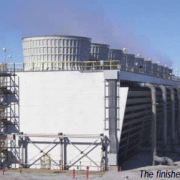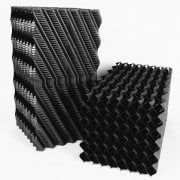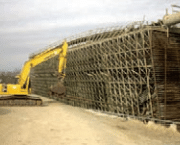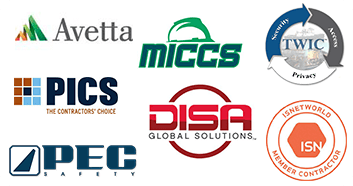Cooling Tower Fundamentals: Cold Weather Operations and Components
In our last cooling tower fundamentals post we covered some of the basic cooling tower components. In this cooling tower fundamentals article we will discuss the remaining basic cooling tower components and how cooling towers handle cold weather operations.
Cold Weather Operations
The most important factor is to learn to identify your own individual needs with respect to winter operation control. There is simply no substitute for frequent visual inspections of the tower until enough operating experience has been gained to verify that a specific operating mode is effective for a given set of load and ambient conditions.
The key to successful winter start up is to preheat the water in the basin before it is directed up and over the tower. A heat load must be applied to the tower with the hot return water bypassed directly back to the basin. Water may then be routed up over the tower when the basin water temperature reaches approximately 80°F. Fan speed and number of fans operating may then be used to regulate the basin water temperature. As an added step in maintaining heat in the basin, all fans may be deactivated.
Without fans operating, air flow through the tower will continue by the thermal draft at flow rates up to one fourth that of operating the fans on low speed. This may prove to be an alternative to cold weather operation under colder conditions.
For seasonal shutdown, heat trace the make-up line to prevent freezing and simply drain the tower.
To remove icing on support structure, should it develop, the tower may be operated without fans in operation until the hot water melts the ice and clears the supports.
It is important to note that the bypass valve must not be left open at the same time that one or both riser valves are open.
Under severe cold weather conditions, (below zero degrees F) the normal procedure is to operate each individual fan in reverse for a period of fifteen (15) to twenty (20) minutes and to repeat this cycle once every two (2) to three (3) hours.
Air Inlet Screens
Air Inlet Screens are always part of blow thru, counterflow towers to protect people from rotating equipment . Some designs can be a hazard (or ingest trash) when accessible from the underside and require the specifier to call out additional screening. They can be a worthwhile accessory when there are nearby trees even when not required for safety reasons.
Air inlet screens should be eliminated on towers utilizing inlet ductwork. Inlet ductwork may also make it necessary to block extraneous air entry such as from the underside when towers are elevated. This is where a good sales engineer will tailor the tower to the duty.
Vibration Cutout
A vibration cutout device is used for any tower that has a fan motor to shut the motor down if excessive vibration is sensed. Small prop fans and centrifugal fans don’t normally cause enough vibration or damage to require a vibration cutout device, but they are a practical control devices for towers with large propeller fans.
Ladders and Handrails
Ladders, handrails, walkways, platforms, stairs, ect. are used where applicable depending on tower size and the specific job.















